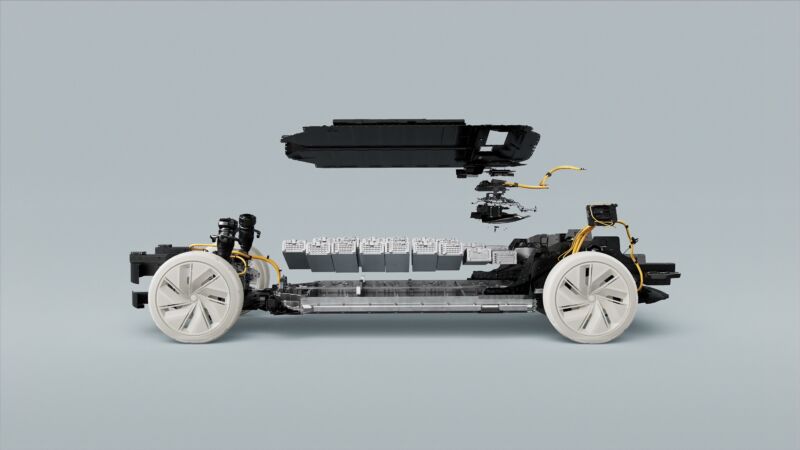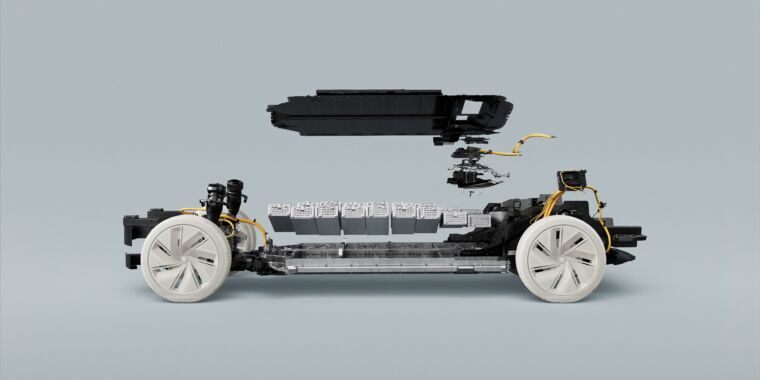An EV that charges 30% faster? Volvo and Breathe think their tech can do it
software-defined battery —
Real-time battery-management algorithms on an embedded processor? Yes, please.

Enlarge / Volvo’s electric powertrains are going to get a bit smarter with Breathe’s new real-time battery-management system.
Volvo
Would you like an electric vehicle that can charge up to 30 percent faster than the current breed? If so, you’re not alone—Volvo Cars thinks that’s a desirable outcome, too, which is why the carmaker has invested in and partnered with a British startup called Breathe Battery Technologies. Consequently, Volvo will be the first automaker to add Breathe’s new battery management technology to its EVs, although, before too long you should see Breathe’s tech show up in other EVs, as well as consumer tech devices.
A spinoff out of Imperial College in London, Breathe wants to add some extra brainpower to battery management.
“The frustration that everyone feels is that cell manufacturers brute force and empirically test batteries until they die,” explained Ian Campbell, CEO of Breathe. “They ship the data sheet alongside those batteries that has some numbers baked in, that says “control it according to this A4 piece of paper,” and that significantly underutilizes the complex electrochemistry and materials in the system that they built and shipped.”
Instead of having prebaked charging data that governs that battery pack throughout its life, Breathe instead has developed a dynamic battery management system that provides much more granular control over the pack as it charges. Consequently, it says it can improve charging times by 15–30 percent over current packs.
It seems an intuitive idea—instead of benchmarking a battery at the beginning based on cell specs, why not constantly monitor the pack to know exactly how much charge it can or can’t accept right now?
“It is insanely difficult to take a battery model that is a complicated piece of maths and modeling electrochemistry, to take that to an embedded application processor like the integrated circuit in a Volvo car or any car in the world or any laptop or smartphone,” Campbell told Ars. “That is then fundamentally what enables us to take physics, take equations, algorithms, maths, and electrochemistry, from what’s traditionally been on high-performance computing environments to integrated circuits. By running that real-time, we have the fidelity of control that… enables us to deliver, then, the end-user experience that we really want,” he said.
One can see why an automaker like Volvo might find that attractive—Breathe’s tech requires no hardware changes to Volvo’s EVs, and it’s agnostic of cell chemistry. And since it can run on low-power embedded processors, it’s reasonable to expect it to show up eventually on smaller devices than cars. But Volvo gets to be first.
“For us it’s not important that we have exclusive rights, but it was important for us to be the first mover and with volume as well. Because this is a technology that solves part of the customer pain points with electric cars today,” said Ann-Sofie Ekberg, CEO of the Volvo Cars Tech Fund.
Volvo is keeping coy on exactly which new EV will be the first to feature Breathe’s software, but Ars will keep an ear to the ground to try to find out.
An EV that charges 30% faster? Volvo and Breathe think their tech can do it Read More »
